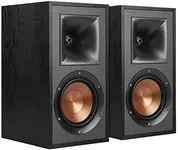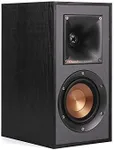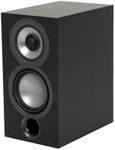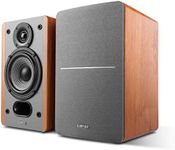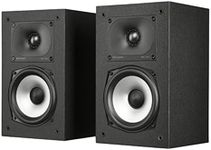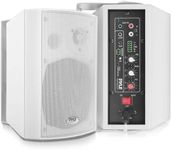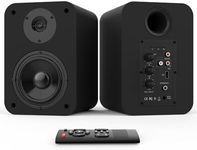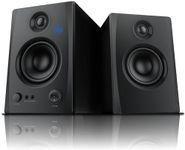Buying Guide for the Best Passive Bookshelf Speakers
When choosing passive bookshelf speakers, it's important to consider several key specifications to ensure you get the best fit for your needs. Passive speakers require an external amplifier to power them, so you'll need to match them with a suitable amp. The right speakers can enhance your listening experience, whether you're using them for music, movies, or gaming. Here are the key specs to consider and how to navigate them.Power HandlingPower handling refers to the amount of power (measured in watts) that a speaker can handle from an amplifier without being damaged. This is important because it ensures that your speakers can handle the output from your amplifier without distortion or damage. Power handling is usually divided into two values: RMS (continuous power) and peak (maximum power). For most users, matching the RMS power handling of the speakers with the output of the amplifier is sufficient. If you plan to play music at high volumes, look for speakers with higher power handling capabilities.
SensitivitySensitivity measures how efficiently a speaker converts power into sound, expressed in decibels (dB). Higher sensitivity means the speaker can produce more sound from less power. This is important because it affects how loud your speakers can get with a given amount of power. Sensitivity values typically range from 85 dB to 100 dB. If you have a lower-powered amplifier, look for speakers with higher sensitivity (90 dB or above) to ensure adequate volume levels. For higher-powered amps, sensitivity is less critical, but higher values can still provide better performance.
Frequency ResponseFrequency response indicates the range of frequencies a speaker can reproduce, measured in Hertz (Hz). This is important because it affects the overall sound quality and how well the speaker can reproduce different types of audio. A typical range for bookshelf speakers is 50 Hz to 20,000 Hz. If you enjoy bass-heavy music or want a fuller sound, look for speakers with a lower minimum frequency (below 50 Hz). For general listening, a standard range will suffice, but ensure the upper range covers at least up to 20,000 Hz for clear high frequencies.
ImpedanceImpedance is the resistance a speaker offers to the current from the amplifier, measured in ohms. This is important because it affects the compatibility between your speakers and amplifier. Common impedance values are 4, 6, and 8 ohms. Most amplifiers can handle 8-ohm speakers, which are the most common. If your amplifier supports lower impedance (4 or 6 ohms), you can choose speakers with those values for potentially better performance. Always check your amplifier's specifications to ensure compatibility with your chosen speakers.
Driver Size and ConfigurationDrivers are the components within the speaker that produce sound, and their size and configuration can impact audio quality. This is important because different driver sizes are better suited for different frequencies. Bookshelf speakers typically have a combination of woofers (for low frequencies) and tweeters (for high frequencies). Larger woofers (5-8 inches) can produce better bass, while smaller tweeters (1 inch) handle high frequencies. Consider your listening preferences: if you want more bass, look for speakers with larger woofers. For balanced sound, a well-matched woofer and tweeter combination is ideal.
Build Quality and MaterialsThe build quality and materials of the speaker cabinet and drivers can affect sound quality and durability. This is important because well-constructed speakers can provide better sound and last longer. Look for cabinets made from dense materials like MDF (medium-density fiberboard) to reduce vibrations and improve sound clarity. High-quality drivers made from materials like Kevlar or aluminum can offer better performance. Consider the overall construction and finish of the speakers to ensure they will fit well in your space and withstand regular use.
